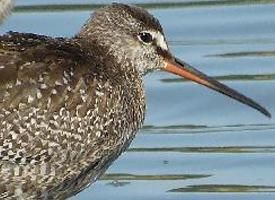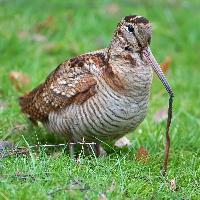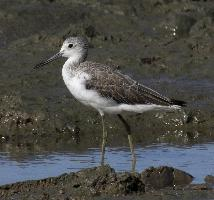
Állatleírás
The Common Snipe (Gallinago gallinago) is a captivating bird species that belongs to the sandpiper family, Scolopacidae. This bird is well-known for its elusive nature, remarkable camouflage, and unique "winnowing" display sounds. The Common Snipe is distributed widely across the globe, inhabiting parts of Europe, Asia, and North America. It thrives in wetland habitats, including marshes, bogs, and muddy areas near rivers and lakes, where its presence often goes unnoticed due to its excellent camouflaging abilities.Physically, the Common Snipe is a medium-sized bird, measuring about 25 to 27 centimeters in length, with a wingspan ranging from 40 to 45 centimeters. One of its most distinctive features is the long, straight bill, measuring about twice the length of its head. This bill is highly sensitive and flexible at the tip, enabling the snipe to probe deeply into soft mud to locate its prey, which primarily consists of invertebrates such as insects, worms, and small crustaceans.
The plumage of the Common Snipe is a masterful blend of browns, buffs, and blacks, creating a marbled or mottled pattern that provides excellent camouflage against the marshy landscapes it inhabits. The back is predominantly dark with streaks and bars, while the belly is lighter, usually a soft white or buff. The head features a distinctive striped pattern, with a dark stripe running through each eye.
Perhaps one of the most intriguing aspects of the Common Snipe is its breeding display, known as "winnowing." During the breeding season, males perform a dramatic aerial display to attract females, flying high into the sky then diving rapidly while making a distinctive, haunting sound. This sound is not vocal but is produced by the vibration of the bird's outer tail feathers as air passes through them during the dive. This unique courtship ritual is a marvel of the natural world and a delightful spectacle for birdwatchers.
The nesting habits of the Common Snipe involve the female constructing a well-hidden nest on the ground, typically in dense vegetation. The nest is a simple structure, lined with grasses and leaves. The female lays a clutch of about four eggs, which she incubates for around three weeks. Both parents participate in raising the young, which are precocial and able to leave the nest shortly after hatching, though they remain dependent on their parents for food and protection for several weeks.
Despite facing threats such as habitat loss and degradation, the Common Snipe has managed to maintain relatively stable populations across much of its range, thanks in part to its adaptability and the conservation of wetland habitats. This bird remains a symbol of the rich biodiversity found in wetland ecosystems and serves as a reminder of the importance of conserving these vital habitats for future generations.
Hasonló állatok
Új állatfotók
Top 10 állat
- Diana monkey (Cercopithecus diana)
- Dolphin gull (Leucophaeus scoresbii)
- Moustached guenon (Cercopithecus cephus)
- Galápagos tortoise (Geochelone nigra complex)
- Stone loach (Barbatula barbatula)
- Japanese spider crab (Macrocheira kaempferi)
- Colossal squid (Mesonychoteuthis hamiltoni)
- Common house mosquito (Culex pipiens)
- Common reed warbler (Acrocephalus scirpaceus)
- Sea urchins (Echinoidea)


